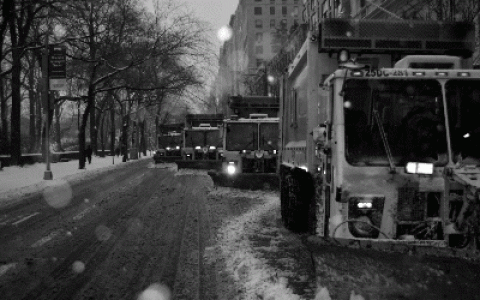Picking Up: On the Streets and Behind the Trucks with the Sanitation Workers of New York City
By Robin Nagle
Farrar, Strauss and Giroux, 2013
Rationally, we know garbage isn't picked up by the faeries, but to much of the public, it might as well be. We "take out" the garbage, but who removes it?
To write Picking Up: On the Streets and Behind the Trucks with the Sanitation Workers of New York City, NYU anthropologist Robin Nagle took a job with the city's Department of Sanitation and followed, as a participant observer, those she calls "the city's own municipal housekeepers." A city can't survive without regular and dependable trash removal, and her ethnography presents a detailed portrait of the 7,200 men and women willing to do it expeditiously. It's a tough, dirty, and dangerous job.
Nagle notes that injury rates for "san workers" outstrip harm done even to cops and firefighters. The Bureau of Labor Statistics ranks refuse and recyclable materials collection as the nation's fourth most dangerous job, exceeded only by commercial fishing, logging and plane piloting.
Adding insult to injury, those who prevent New York from being blanketed in waste and who keep traffic arteries plowed and passable even in the worst snowstorms are all but invisible to fellow New Yorkers. Like Rodney Dangerfield's everyman, they get no respect. When a malicious Queens city councilman charged workers with engaging in a slowdown during the great 2010 snowstorm - this while they actually worked 41 days straight with no evidence of doing any but consistent hump work - the media ran with the story.
It's a common enough axiom. Work, when creative, is valued. Labor, which is by definition uncreative, is not. But the 2010 allegations of a worker slowdown were preposterous, Nagle writes. "If a foreman ever gave an order not to plow during a snowstorm, several san workers told me, no one would listen."
In fact, the department operates 24/7/365. Workers on two-person crews (it was three to a truck until then-mayor Ed Koch cut the number down - negotiating a "productivity deal" in exchange for a wage increase) must learn survival skills such as lifting trash safely, operating a variety of machinery, maintaining vehicles, dodging street traffic, avoiding getting cut or poisoned or crushed and acclimating to the stench and perpetually stained work clothes, all while looking out for each other.
And it has its advantages. In the era of the precariat, when even PhD holders wait tables, these san men and women have full-time, secure jobs. The pay is good. There's even a generous retirement package and a strong union, rare enough in the public sector today and almost unknown in private industry. With overtime they can make more than $100,000 annually - decent money. A former bus driver tells Nagle of one more advantage: he switched from the Transit Authority to the sanitation department "because this trash doesn't talk back."
Nagle should have included more discussion of union-management conflicts. The nine-day strike in 1968 paralyzed the city, and Nagle acknowledges that the union is a powerhouse, but what role it plays day to day - as opposed to management's ongoing oversight, which she details at length - isn't clear from her telling. What fights did it pick? What fights did it miss, and why? Who chooses to become a union official as opposed to a foreman?
Also missing, though not surprising for an anthropological study that's typically thick on description but sadly thin on explanation, is any critique of garbage as a public service under capitalism. There may be, as Michael Bloomberg remarked, no Democratic or Republican way to collect garbage, but a class society shapes and constrains public services. How this one should function or could function better isn't part of Nagle's story.
Apart from that, the book is a wonder. A reader comes away knowing the story is authentic because the woman was there. She gets the job, its smells, dangers. The formal and the informal rules and eccentric work culture (and what job culture isn't a bit eccentric?). She renders the scene as lived daily, along with a transparent reading of the department's origins and mission. It's a comprehensive view from the top to the bottom of an army fighting a dirty war.
So instead of honking at the driver whose garbage truck is blocking the street, shake the sanitation worker's hand for the job he or she does. Failing that, tell them "good job, and thanks."
[Michael Hirsch, the first in his family to attend college, was a campus antiwar leader, a college professor in Boston as long as he could stand it, then a steelworker in Indiana until the mass layoffs of the early 1980s. Since 1985, he has worked as a labor editor and writer for three New York-based labor unions, as well as a contributor to numerous publications.]
[Thanks to the author for sending his review to Portside.]


Spread the word